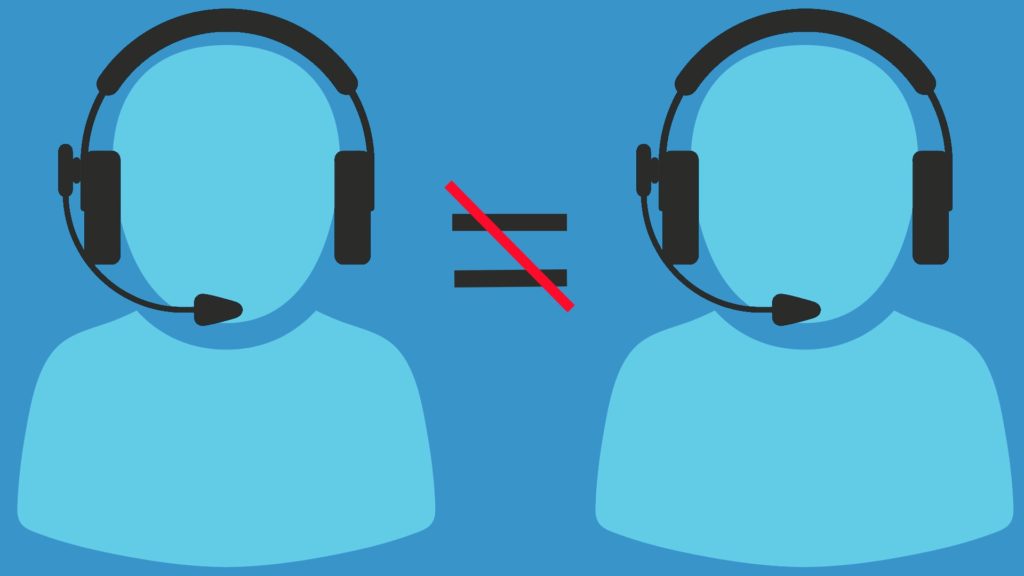Between a Rock and a Hard Place Part 2: Agent Performance

6 min read
In the last post in this series about the influence and role contracts have in service operations, we explored some general challenges service providers face that stem from their contracts and outlined what better, less risky contracts look like. This information is particularly useful for providers entering a rebid or an entirely new customer relationship, but less useful for providers who are in the middle of their contract, already aware of its shortcomings and lacking a way to change it. In this latter case, providers need to work with their contract and identify ways to improve without incurring significant costs. But how they do that when an improvement in one area generally leads to damage in another is a challenge, especially for an already struggling service desk.
A trick to doing so lies in an often under-tapped and certainly under-rated resource: agents. Agents, after all, are the ones actually doing the work. They are the ones handling impatient callers and resolving tickets, which is what the SLAs measure. They know the work better than anyone and are intimately aware of what makes it difficult or easy. Furthermore, agents with exceptional performance (i.e., low handling times AND high first contact resolution rates) are not just exceptional outliers, they carry the knowledge and ability that enables their performance. By leveraging these agents’ best practices and techniques and evangelizing them to other agents, providers can improve their metrics at little or no additional cost!
Understanding the Agent Paradox
While this sounds simple, there are reasons why providers are hesitant to try or struggle to realize tangible gains in service desk performance through improving individual agents:
- Call desk operations are complex, and the SLAs form a delicate system that service leaders are reluctant to meddle with
- Agents can work on very different tasks, so volume and handle time comparisons are not always fair and often difficult to make
- Leadership and culture don’t always promote performance or leverage the talent and learnings of their agents, who are often in entry-level roles with short tenure
As a refresher on our last blog post, it is up to the providers to deliver the service they have agreed to in the contract, a service that often needs to be continuously improved. Customers don’t generally care about the complexities and difficulties of doing so, as this is a core reason why they contract out the work in the first place. Since better service often costs more, it is in the interest of the providers to deliver exactly the levels of service specified in the contract and paid for by the customer while exploring alternative avenues for improvement.
This is hard to do, as metrics and SLAs are related to one another, often inversely. It is not uncommon to see some service desks incidentally over-delivering (or “gold-plating”) certain aspects of the services (e.g., first contact resolution rates – FCR) while struggling in others (e.g., average speed of answer – ASA – or abandonment rates). There is a specific, intricate relationship between these metrics, particularly evident during periods of pressure when there are multiple users waiting to talk to agents. For example, the longer an agent spends with an individual user, the more likely they will be able to resolve their issue in that call (hence increasing FCR). As a result, they are not able to get off the phone quickly to talk to other users. This means the next waiting user needs to wait longer (hence increasing answering time), and/or will wait so much that they end up abandoning the call (hence increasing abandonment rate).

The Hidden Variable: Average Handling Time
What we see driving the inverse behavior in the above example is a variable familiar to many service providers: average handling time (AHT), the amount of time an agent spends on average either on the phone with a customer or resolving an incident. This can be thought of as increasing a desk’s AHT by, say, encouraging all agents to spend more time with each customer, the desk will increase FCR, but at the cost of higher ASA and abandonment. This relationship reverses when a desk tries to lower AHT.
While this relationship is true in general, and reliable in our experience regardless of industry, it is not always consistent for actual agents within a service desk. Some of the best agents will have lower than average handling times and greater than average FCR, and vice versa for the worst agents. Other agents will have similar FCR, but a wide range of AHT. There is also another troubling but common type of agent – one with exceptional FCR but high AHT. These agents are extremely successful in one dimension, and often praised for their FCR, but are usually the bottom performers when you look at total volumes and throughput! This is because the additional AHT means more time spent with fewer customers, and potentially dozens of other callers who abandoned or waited excessively.
Seeing Agent Performance as a Mosaic of Individuals
In reality, agent performance varies a lot, and agent improvement plans need to consider not only the current performance needs of the desk under its contractual obligations but each agent’s performance relative to their peers. The actual improvement needs of each agent may therefore vary substantially and even be counterintuitive. For example, some agents may be encouraged to escalate some calls they know they could resolve, while others may be encouraged to escalate less and resolve more.
The key is knowing which agents need to change, which areas they need to change in, and how these changes will impact the desk’s overall service metrics. But the math gets complicated even in the example where we are considering one type of work. In real service desks, there are many different types of issues and workgroups, which makes comparing agents and understanding how they fit into the greater picture hard and complex. Providers may operate with several teams, from large, general catch-and-dispatch and first-level response support groups to small, highly specialized workgroups or even third-party contractors (including field service). There may be several different levels of support with different priorities and multiple languages.
This makes it incredibly difficult to target improvement plans within a customer account. To make things even more complex, providers in modern service operations will leverage some of their agents across different customer accounts. In this case, not only are the agents working on different types of work, but they might be spending very different amounts of time in any given account, and be subjected to context switching. There may also be a combination of part-time and full-time workers, meaning you not only need to look at what the agents are working on, but also how much time they are staffed and available to take on this work. You can’t just compare agents to agents like apples to apples.

Seeing the Tree Lets You Solve for the Forest
When work is highly segmented like this, it becomes hard to find standard analytics that works for all desks, or frankly work at all. If you keep things too high-level, there is never enough granularity to understand what you can actually do to make tangible improvements. If you make things too detailed, valuable insights are consumed by noise and some of these insights might not be based on enough data to be conclusive at all. That’s where T-K comes in. Our product T-K was built to identify what matters and put it in the spotlight.
Specifically, T-K considers how work has been done in the past, including the work of past agents who have left the desk, in order to build strong baseline benchmarks for performance and properly assess and measure agents and output across every segment. T-K’s effort model (which we will explain in another blog post) allows us to differentiate high-volume, low-effort work categories (e.g., password resets) from low-volume, but significant-effort work categories (e.g., change management). In turn, T-K’s users can remain focused on reducing actual and total effort (and thus operating cost) and not just sheer volume. This approach takes the complexity of modern service operations and reduces it in such a way that service line managers know exactly which agents, which specialty, and which metrics they need to improve to better their service with respect to their contract and customer relationship. By focusing efforts where they are most impactful, providers can ultimately gain control over their contract, eliminate penalties that had been eating away at their margins, and improve service to clients while properly optimizing their costs.
But Are Providers Ready?
It is surprising to some customers how much service desks can improve by just targeting individual agent performance, and even more surprising how valuable the knowledge is that they can gain from their agents, who are too often considered expendable. This comes from too much focus on desks’ averages and not on the individual components of which they are made, as well as the unfortunate and undervalued reputation of the agent role, a position with exceptionally high attrition and low engagement.
But it doesn’t need to be this way. As we saw above, the agents are the ones doing the work and contributing to the desk’s performance. They often know more about the technicalities than anyone else. The top performers are not just outliers – they are doing something providers should learn from. On the other hand, among the bottom performers lies the most opportunity for improvement of a desk’s averages! If providers were focused on making the worst agent answer a few more calls per hour, they would lower the desk’s answer times and abandonment rates and significantly improve customer satisfaction and agent retention. The more room for improvement, the bigger the impact.
T-K Intelligence Provides Accessible, Actionable Insights
By using T-K to identify talent and opportunities early on, providers create a culture that celebrates good performance, reduces the agent stigma, and ultimately rewards the qualities that make for a happy customer and a lean operation. This in turn creates a better environment for the agents that increases their satisfaction, engagement, and ultimately tenure. It also boosts the service for the customer. It’s a win-win-win, for customers, agents, and service providers.

